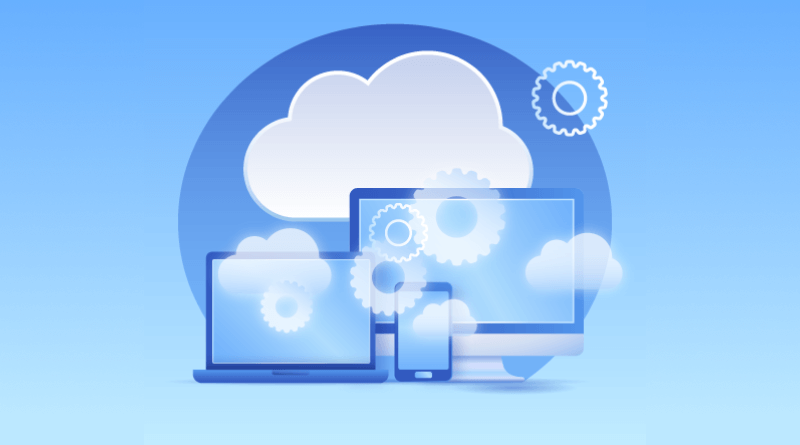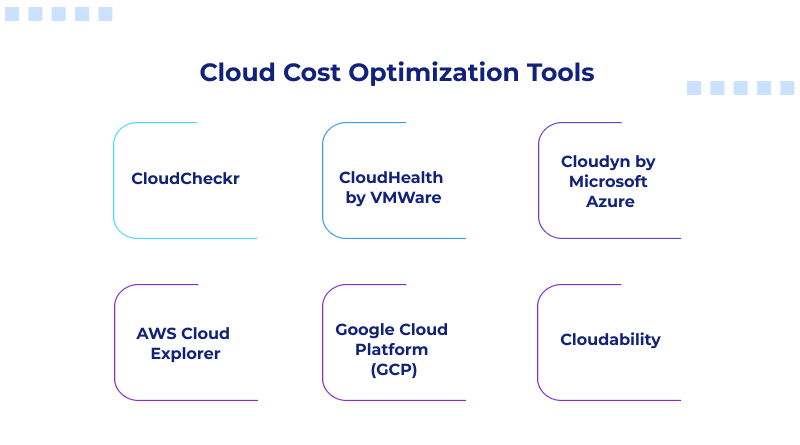Do you remember the days when access to high-computing power felt like an immunity only a few could afford? The rise of the cloud has equalized access to computers, making advanced computing accessible to everyone. With merely a few clicks, entrepreneurs and large-scale organizations can now utilize immense processing power.
However, this convenience isn’t without cost, and it’s easy to get overwhelmed by steep cloud expenses. While 61% of organizations consider cost optimization a priority, cloud computing can still be more expensive than expected. Fortunately, whether managing a cloud-based infrastructure or a WordPress hosting environment, proven techniques can help optimize cloud costs and keep expenses in check.
As businesses benefit from the cloud’s scalability and flexibility to deploy servers and computing instances in minutes, cloud environments can become disorganized with unoptimized or unused resources, adding excessive complications and straining IT budgets.
Though cloud computing allows clients to pay only for the cloud resources they choose, cloud service providers (CSPs) may still charge them regardless of whether they utilize those resources. This is where the significance of cloud cost optimization becomes clear.
Table Of Content
What is Cloud Cost Optimization?
Cloud cost optimization is a practice that consists of proactive monitoring, assessment, and management of cloud resources. The fundamental purpose of cloud storage optimization is to reduce cloud expenditure while meeting performance demands and business objectives.

When minimizing costs in private cloud environments, it’s crucial to comprehend various aspects that influence cloud expenses. The factors include:
- Type and amount of cloud resources being utilized
- The pricing structure of cloud services
- Client utilization of those resources
An efficient cloud cost management plan also needs cloud hosting expertise, including insights into infrastructure architecture, resource allocation, and pricing models.
You can track areas where resources are unutilized by analyzing cost management data, which helps identify options for cost savings and waste reduction.
Additionally, understanding cloud billing is required for effectively optimizing cloud costs. Cloud pricing consists of various considerations such as:
- The pricing structure of cloud services
- Data transfer costs
- Reserved instances
- Volume discounts on cloud expenses
Overall, cloud optimization is a critical process for maximizing the benefits of cloud computing while diminishing costs.
Why is Cloud Cost Optimization Essential?
Whether you’re a small business or a large organization, unforeseen cloud expenses can be a major setback for any organization. Proactively optimizing costs helps reduce unnecessary costs and improve overall financial planning. For instance, with a scalable cloud provider like MilesWeb, you can constantly optimize your operational cost, so you only pay for what you need.
The primary objective of cloud cost optimization is to create a more productive, streamlined, and cost-effective cloud environment.
Best Practices for Cloud Cost Optimization
Cloud cost optimization is an essential aspect of efficient cloud management. Here are the top 12 practices businesses can follow to reduce their cloud costs.
1. Analyze Pricing and Billing Details
Cloud vendors offer billing details that depict the full cost and client utilization of cloud services. By evaluating these insights, you can identify high-cost areas and maximize profitability. It helps in making informed investment decisions and avoiding unnecessary resource allocation.
2. Define Budgets
Effective budgeting is essential for planning your hybrid cloud, cost centers, and computing strategy. It helps cloud cost control by ensuring all stakeholders understand project goals and budgets. Engineering leaders, product managers, and executives must have a clear understanding of the fundamental cost requirements to ensure impactful decision-making. This depends on the planned packaging and delivery of products and features. For instance, determining whether a service should be offered as a free trial or an advanced plan. These aspects are executed during the planning and development phase, ensuring speed and flexibility.
3. Recognize Underutilized Resources
Administrators and developers often provide a temporary server for a particular task; however, they may forget to de-provision them once the task is done. Similarly, an admin may overlook detaching storage from instances that already have been terminated.
Such scenarios lead to inflated expenses for resources the organization no longer needs. A cloud cost optimization strategy helps to spot these unutilized instances, ensuring that unnecessary expenses are eliminated.
4. Recognize Dormant Resources
Cloud providers bill for idle resources, even if they are not in use. Reduce cost expenses by identifying idle computing resources. For instance, if your CPU resource consumption is only 10%, but the cloud provider charges for 100%, you are wasting a considerable amount of computing resources.
Effective cloud spend management helps detect all idle resources and combines them to reduce costs. To upgrade or downgrade capacity, you can benefit from cloud features such as auto-scaling, load balancing, and scale-on-demand.
5. Right-size the services
Rightsizing allows you to assess and update computing services for optimal efficiency and scale. You can use rightsizing tools to experience the appropriate usage across various instances. This helps eliminate unnecessary cloud costs, optimize resource utilization, and ensure compliance while maintaining unmatched performance from existing resources.
6. Use reserved resources
Reserved instances (RIs) are prepaid compute instances that offer substantial pricing discounts. Many cloud vendors offer significant discounts of up to 75% on reserved instances. Since you pay upfront, research and planning, depending on your past instance usage, are essential. Cloud providers such as Amazon Web Services offer savings plan programs, which provide identical discounts but allow more scalability. This makes RIs ideal for predictable workloads with stable resource needs.
7. Use Savings Plans
The savings plans pricing model is scalable and enables great savings by offering up to 70% on your AWS usage. The model promises amazingly low costs, identical to RIs, based on one-year or three-year subscriptions. This is perfect for organizations with dynamic workloads that need flexibility.
8. Leverage Spot instances
AWS auctions its leftover resources at low prices. However, these instances are rarely available and can sell out quickly. Spot instances are useful for batch jobs or tasks that can be suspended instantly. They are not for complex, long-running, or resource-consuming operations.
9. Limit Data Transfer Fees
Migrating data to and from a public cloud can be costly. Cloud providers frequently charge data fees for migrating data from their platform’s cloud services. You can also incur charges for transferring data between regions. Decrease cloud migration costs by evading needless data migrations.
10. Pick a Single or Multi-cloud Deployment
Multi-cloud deployments help you prevent vendor lock-ins. It reduces costs and enhances availability; however, they can be more costly. With a single vendor, you can benefit from large-volume purchases. Evaluate whether a single-vendor or multi-cloud environment meets your business needs.
11. Supervise Cost Oddities
Use the cost management console to determine budgets and predict and optimize cloud costs. It is beneficial to optimize your entire cloud cost intelligence and cost management. The console features a cost anomaly detection that tracks usage and expenses. It uses machine learning to detect spending anomalies and forecast future costs.
12. Use Suitable Storage Options
AWS and other cloud hosts provide numerous storage tiers with substantially different prices. Picking the right tier is essential to prevent overspending.
Cloud Cost Optimization Tools
There are several tools and platforms available for cloud cost optimization, helping to reduce cloud expenses by exporting cloud management data. Some of the prominent cloud optimization platforms are:

1. CloudCheckr
This tool offers visibility into usage and costs across multiple cloud platforms like AWS, Azure, and Google Cloud.
2. CloudHealth by VMWare
CloudHealth is a cloud service management platform. It allows you to envision, fine-tune, and supervise their cloud environments.
3. Cloudyn by Microsoft Azure
Cloudyn is a Software as a Service (SaaS) solution that helps grow your cloud platform proficiently. It is a multi-cloud monitoring and optimization service that supports Azure, Amazon Web Services (AWS), Google Cloud, and OpenStack.
4. AWS Cloud Explorer
This tool offers usage statistics and price predictions and identifies the scope for cost-saving. It also provides a reservation planner to optimize EC2 instance usage. AWS Cloud Explorer offers an easy-to-use interface to visualize and manage your cloud costs and usage over time.
5. Google Cloud Platform (GCP)
Google Cloud’s cost management tools offer greater visibility and management. They also optimize cloud costs and usage with smart recommendations. You can track and inspect current cost trends and predictions.
6. Cloudability
Cloudability is a cost management tool for tracking and evaluating cloud expenditure within any organization. It offers comprehensive features such as a user-friendly dashboard with a graphical view, alerts, daily email reports, and cost allocation.
These are a few instances of the numerous tools and platforms available for managing and optimizing cloud costs. Choosing the right cloud cost management tool or medium will help optimize cloud costs and purchasing decisions.
Cloud cost optimization is all about amplifying the value you get from your cloud computing expenditure. It’s the process of regularly evaluating your cloud resource usage and spending to avoid paying for unnecessary resources.
The fundamental goal of cost-saving cloud strategies is to deploy applications and workloads affordably without sacrificing performance or scalability.
In this article, we have explored how cloud optimization works, the difficulties of deployment, and the best actionable measures to follow for impactfully optimizing cloud costs.
You can choose tools like Azure Cost Management, Google Cloud Platform, or AWS Cost Explorer. Businesses can also benefit from various cloud cost management tools offered by cloud service providers. These tools are meant to supervise the usage and make more informed decisions. Preparing a suitable cloud cost management strategy that aligns with business goals is vital. By doing so, businesses can garner the complete advantages of cloud computing without exceeding their overall cloud expenses.
FAQs
How can rightsizing cloud resources reduce costs?
Rightsizing enables you to align your cloud resources with what you genuinely require, ensuring you are not paying for additional capacity you don’t use. By inspecting your workload, you can increase or decrease resources to prevent wastage. This streamlines your expenses while keeping performance intact. Additionally, it optimizes your overall cloud configuration.
How can cloud automation help reduce operational costs?
Cloud automation handles repetitive tasks, so you don’t have to. It automatically scales resources, turns off idle instances, and optimizes workloads. This reduces manual effort and the chances of human errors, saving time and money. Over time, it enables seamless cloud operations without wasting money.
What tools and services can help with cloud cost optimization?
There are many tools available, such as AWS Cost Explorer, Google Cloud Cost Management, and CloudHealth, which assist in monitoring your cloud expenses. These tools provide insights into where your money is being spent and assist in pinpointing areas to reduce costs. Most tools also provide budgeting and forecasting solutions to optimize cloud expenses.
How can cloud cost optimization help with budgeting and forecasting?
By optimizing cloud spend, you gain enhanced visibility into your expenditure, making budgeting much simpler. You can analyze usage patterns, forecast future expenditures, and make your budget adjustments accordingly. This eliminates unforeseen expenses and ensures you only pay for what you actually need. Basically, it keeps your cloud expenditure in check and in line with your business objectives.















